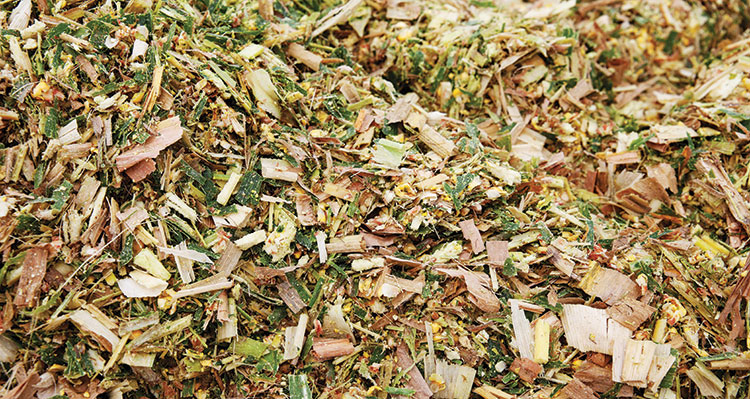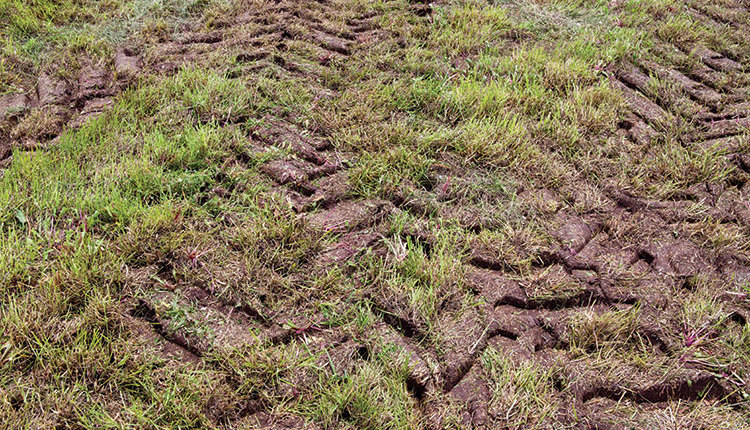
As agronomists working in the forage and dairy space, we are often in a conundrum over forage moisture and forage dry matter (DM). It seems most nutritionists prefer the term dry matter, while in the agronomy world, moisture is the desired terminology.
These two terms are inverse of each other, like the idea that if you have more people working on a job, it will take less time to complete the work. Since the terms are inverses of each other, this shouldn’t be a big issue, except that depending on our training, tradition, and experience, we’re constantly doing mental gymnastics to convert one to the other. This is not unlike the conversions we find ourselves doing between U.S. and metric units of measurement.
Opinions vary
Each profession has good reasons for thinking about dry matter or moisture, even though they get to the same thing. In the row-crop and grain world, where most agronomists work, moisture percentage is the common language to communicate changes in the water content of grain.
Corn, soybean, and wheat growers concern themselves with rates of grain moisture change over time and the final moisture content prior to harvest or storage. It’s the marketplace measure for grain-related activity and sales.
When agronomists work with forage crops during the pre-harvest through storage phase, moisture remains the most common term used. For instance, we monitor whole plant corn silage post-dent (pre-harvest) to know when we are approaching 65% moisture.
During the feedout phase, DM content is the preferred terminology in the dairy world. Adjusting feed sources to a dry matter basis is necessary since a nutritionist needs to know the total quantity of nutrients fed in a diet to maximize animal performance. Thus, dry matter has become their point of reference and mindset as they talk about forages and feed.
Know what is fed
Is there really a difference, and more importantly, a reason to prefer one term over the other? All forages and grain consist of moisture (water) and dry matter. Dry matter is the fiber, protein, minerals, carbohydrates, and other nutrients in grain or forage after removing all moisture. Moisture, on the other hand, is the percentage of water remaining.
When a sample result indicates “as-fed,” it means that the nutrient value includes the weight of the water in the sample, which has a dilution effect on the results. For instance, if you measure the crude protein content of a sample, the “as-fed” result will be lower than the DM adjusted result. By adjusting to a DM basis, you remove the dilution effect of the water and put all the nutrient values on a level playing field.
When purchasing feeds, most sales are based on an “as-fed” basis which includes the moisture. Since moisture content varies between forages, it is best to adjust to a DM-basis whenever possible to avoid paying for excess water.
When storing forages or grain, knowing moisture content helps to understand if spoilage or poor fermentation may occur. Finally, understanding actual DM-based concentrations is a high priority when measuring sensitive contaminants like mycotoxins so you know the concentration a cow might see.
Options for testing
Determining moisture (or DM) can be an on-farm activity using several different methods. For most on-farm methods, the grower will need to purchase an electronic gram scale to accurately measure the sample weight before and during drying.
Two of the most common on-farm methods are using a Koster Tester or a microwave oven to dry the sample. The Koster Tester blows heated air though the sample and takes about 25 to 30 minutes to dry a sample. A microwave is quicker, drying a sample in five to 10 minutes, but it requires careful monitoring during the drying process to avoid burning the sample.
Hand-held electronic devices have recently come to the market for “instant” measuring of the moisture content of a sample. These have become more accurate with time and can be a useful on-farm tool.
Finally, samples can be submitted to a local forage testing lab where they dry the sample and then determine moisture content with an NIRS machine. This method is slower — typically 24 hours — but can give additional nutritional information for the sample if requested.
No matter if you are a nutritionist, a farmer, or an agronomist, understanding the difference and importance of dry matter and moisture is critical in harvesting, storing, and feeding forages and grain to cows. It is unlikely that we will ever fully adjust to thinking about centimeters versus inches. Likewise, as agronomists, we may always be challenged to think about DM versus moisture, but both have their time and place on the farm.










